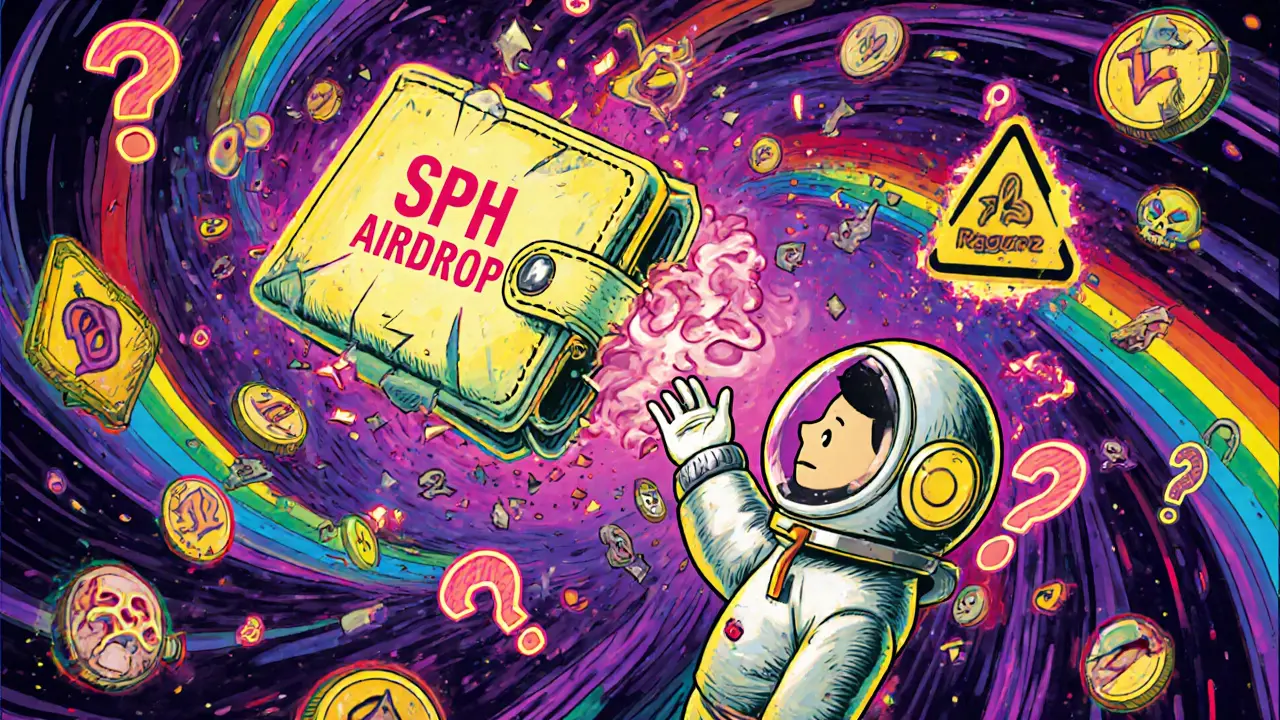Sphynx Network Airdrop: What It Is, How It Works, and What to Watch For
When you hear Sphynx Network airdrop, a token distribution event tied to a blockchain project aiming to reward early supporters with native tokens. Also known as Sphynx token drop, it’s meant to bootstrap community adoption by giving away free tokens to users who complete simple tasks. But not all airdrops are created equal. Some are genuine efforts to grow a decentralized ecosystem. Others are just flashy fronts for exit scams. The Sphynx Network airdrop sits right in the middle of that gray zone—no official website, no verified team, and no clear roadmap. That doesn’t mean it’s fake. It just means you need to dig deeper before you click "claim."
What makes a crypto airdrop trustworthy? It’s not just the promise of free tokens. It’s the blockchain project, a decentralized application or protocol built on a public ledger like Ethereum or Solana. Also known as Web3 project, it should have transparent code, public audits, and active development. Without that foundation, the airdrop is just a digital flyer. Look at the people behind it. Are they anonymous? Do they have a history in crypto? Have they launched anything before? If the answer is no, treat it like a lottery ticket with terrible odds. And don’t forget: if you’re asked to send crypto to claim your airdrop, that’s not a drop—it’s a trap. Real airdrops never ask for your private keys or upfront payments.
Then there’s the token distribution, how and when tokens are handed out to users, often based on wallet activity, social engagement, or holding other tokens. Also known as token allocation, it’s the engine that drives user growth. A fair distribution spreads tokens across thousands of wallets, not just a few insiders. It’s not about who’s first—it’s about who’s active. If the Sphynx Network airdrop claims to reward users for joining a Telegram group or following on Twitter, that’s common. But if the same group is flooded with bots and fake accounts, the whole thing is rigged. Check the token’s contract on Etherscan or Solana Explorer. Is it verified? Does it have a lockup? Are there any unusual transfer restrictions? These aren’t just technical details—they’re red flags in plain sight.
And then there’s the bigger picture: Web3 rewards, the system of incentives built into decentralized networks to encourage participation, from staking to governance voting. Also known as on-chain incentives, they’re what keep networks alive. Airdrops are just one piece of that puzzle. The real value isn’t in the free tokens—it’s in what you can do with them later. Can you stake them? Use them in a DEX? Vote on upgrades? If the answer is nothing, then the airdrop is just a marketing stunt. The Sphynx Network might be building something real. Or it might be the next forgotten name on a graveyard of dead projects. Either way, you don’t need to guess. The tools to find out are right there. Just know what to look for.
Below, you’ll find real posts that cut through the noise—exposing fake airdrops, explaining how tokenomics work, and showing you how to spot a scam before you lose your wallet. No fluff. No hype. Just what you need to know before you claim anything.
Sphynx Network (SPH) Airdrop: What You Need to Know Before You Claim
Sphynx Network (SPH) claims to offer an airdrop, but with zero token supply and no clear rules, it's likely a scam. Learn what's real, what's fake, and how to protect your crypto.
